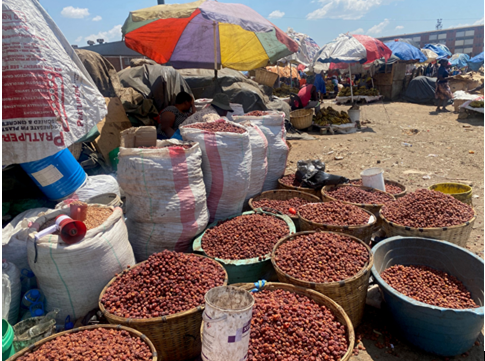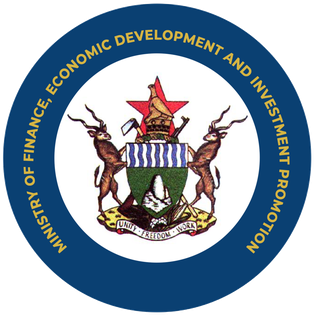
ZIMBABWE is richly endowed with over 40 minerals, and 19 of the world’s rare earth minerals. However, weak governance in the sector has hindered the realisation of its full potential. Recently, the environmental watchdog, Centre for Natural Resource Governance and leading media outlets published reports that starkly describe Zimbabwe’s mineral resource governance as a “crime scene”. The investigative reports by Al Jazeera uncovered industrial-scale looting of minerals, revealing the institutionalised nature of this problem, which involves key government officials as participants and actors. This has resulted in unsustainable levels of illicit flows and corruption within the sector.
The Centre for Natural Resource Governance expressed concern over a criminal case against five people accused of stealing diamonds during the routine sale of diamonds at the Robert Gabriel Mugabe International Airport in Harare. Notably, on October 26, 2020, Zimbabwe Miners’ Federation president Henrietta Rushwaya was arrested at the Robert Gabriel Mugabe International Airport and later convicted for attempting to smuggle six kilogrammes of gold worth US$333 042,28 to Dubai. She, however, got away with a neglible fine.
These incidents signpost the bad governance of mineral resources in the country. Admittedly, Home Affairs minister Kazembe Kazembe recently lamented that Zimbabwe is losing gold worth US$100m every month through smuggling and recent reports put the figure in excess of US$1,5 billion of gold smuggled out of Zimbabwe every year, depriving the cash-strapped economy of crucial foreign exchange revenues needed to finance infrastructural development, agriculture, health, education and other public services.
It is also important to note that the amount of money smuggled out can contribute extensively to financing the national development goals outlined in the National Development Strategy 1.
Without proper management of mineral resources that contribute substantively to the country’s gross domestic product, the goals set out in the country’s National Development Strategy 1, global Sustainable Development Goals, and the continent’s Agenda 2063 — the Africa we want — cannot be achieved. Properly managed, mining can also support domestic resource mobilisation, a key financing mechanism being pursued by the current government. However, we argue that the current mining sector governance regime hinders the sector’s potential due to various illicit activities, including the smuggling of special stones, black market selling of minerals, excessive granting of tax incentives, administrative procedures and tax evasion, among others, which syphon billions of dollars out of the economy.
An examination of the Zimbabwean economy reveals a shift towards extractives. Therefore, the effective management of Zimbabwe's mineral resources is crucial, not only for broad-based sustainable growth and socio-economic development but also for revitalising the country’s ailing economy which has been in crisis mode since the turn of the millennium. Policymakers ought to prioritise the utilisation of natural wealth to ensure sustainable extraction that contributes to economic recovery and avoids costly environmental remediation. Against this backdrop, we argue that the African Union’s Africa Mining Vision (AMV) offers a solution to Zimbabwe’s glaring governance gaps and oversight loopholes in mineral resource governance, presenting a pathway to addressing these challenges. In particular, we propose that adopting and implementing the AMV is crucial for ensuring the transparent, equitable, and optimal exploitation of natural resources, which is essential for broad-based sustainable growth and economic development.
Understanding the Africa Mining Vision
The AMV, themed transparent, equitable, and optimal exploitation of mineral resources to underpin broad-based sustainable growth and socio-economic development, is a policy framework that was created by the African Union in 2009 to ensure that Africa utilises its mineral resources strategically for broad-based, inclusive development.
- Govt reinstates passport application fee
- Govt reinstates passport application fee
- Zesa losing $1.4 billion to crooks
- Govt reinstates passport application fee
Keep Reading
The vision is seen as the means of successful utilisation of the continent’s abundant mineral resources, which constitute roughly one-third of global mineral reserves, yet the majority of Africans are still trapped in what Paul Collier termed the “Bottom Billion”.
Suitably, the AMV aims to build a knowledge-driven African mining sector that catalyses and contributes to the broad-based growth and development of and is fully integrated into a single African market; a sustainable and well-governed mining sector that effectively garners and deploys resource rents and that is safe, healthy, gender and ethnically inclusive, environmentally friendly, socially responsible, and appreciated by surrounding communities; a mining sector that has become a key component of a diversified, vibrant, and globally competitive industrialising African economy; a mining sector that has helped establish a competitive African infrastructure platform through the maximisation of its propulsive local and regional economic linkages; a mining sector that optimises and husbands Africa’s finite mineral resource endowments and that is diversified, incorporating both high-value metals and lower-value industrial minerals at both commercial and small-scale levels; a mining sector that harnesses the potential of artisanal and small-scale mining to stimulate local and national entrepreneurship, improve livelihoods, and advance integrated rural social and economic development; and a mining sector that is a major player in vibrant and competitive national, continental, and international capital and commodity markets.
It is common cause that Africa has failed to realise the full potential of its mineral resources because of poor governance, institutional weaknesses, corruption, and the dominant neo-colonial model of extraction, in which countries extract and export resources in their raw state for use in developed countries with little or no local value addition. These factors inhibit African countries from benefiting optimally from their mineral resources and lock African rich resource countries to the “resource case” hypothesis and “Dutch disease." In this context, the AMV is designed to enhance transparency, equity, and the optimal development of mineral resources to underpin broad-based sustainable growth and socio-economic development in Africa. It is envisaged that the Vision will also promote a sustainable and well-governed mineral sector that garners and deploys resource rents effectively and that is safe, healthy, gender and ethnically inclusive, environmentally friendly, socially responsible, and appreciated by mine-affected communities, something that is absent in African countries, including Zimbabwe.
Aligning Zimbabwe’s Mining Sector with the Africa Mining Vision: Opportunities and Challenges
Zimbabwe is vastly endowed with mineral resources, which, when mined transparently, can be of benefit to the nation. However, poverty rates are still high, even in diamond-rich places like Marange. The mining industry is dominated by artisanal miners and characterised by violence, with machete-wielding gangs disrupting mining operations and affecting investments in this crucial sector. The successful implementation of AMV offers pathways to unlocking the potential of the country’s extractive sector. The implementation of the AMV requires a concerted effort to incorporate it at the national level and ensure the integration of its key tenets into relevant national visions, policies, laws, regulations, standards, and procedures. Thus, its implementation would require building alliances for change and co-ordinated action between public, private, civil society, and community stakeholders.
We argue here that the stakeholder approach to mining governance can eliminate bottlenecks in the awarding of mining claims, and most importantly, corruption, tax evasion, and avoidance, which have been the hallmarks of the industry, casting doubt on the realisation of the government’s vision of possessing a US$12 billion sector by 2023, whose achievement is still debated. The vision calls for Beneficial Ownership and Contract Disclosure. Improved disclosure requirements are necessary to ensure sufficient oversight, and to protect against the risk of unlawful awards to politically exposed and connected persons. The AMV argues for the harnessing of benefits from the mining industry, such as employment generation, the procurement of goods and services, entrepreneurial development, skills and knowledge creation, technology transfer, and infrastructure expansion and linkages. In this context, the Vision contains calls for greater fiscal space and responsive taxation to allow the country to optimise mineral taxes and encourage value addition and linkages.
The Vision offers a gateway for Zimbabwe, whose mining industry has been limited by weak governance. The mining sector in Zimbabwe is largely dominated by military personnel and politically exposed people, who have hindered efforts to promote transparency and accountability. In this context, we argue that the AMV offers a viable option to enhance governance in the sector, addressing challenges such as rampant mineral smuggling and promoting sustained growth. specifically, the Vision supports the efforts of anti-corruption agencies and the judiciary, whose progress in investigating and prosecuting politically exposed persons and recovering stolen assets in the sector has been uneven and slow. To achieve this, the AMV's principles should be integrated into policy frameworks and legislation, including the Rare Earth Minerals Policy, Gold Trade Act, Precious Stones Act, Mines and Minerals Act, and Exploration Title, among others, to ensure a comprehensive and effective approach to addressing challenges affecting the mining sector.
Concluding Remarks
This think-piece discussed the potential of AMV to unlock Zimbabwe’s extractive sector potential for sustainable development and governance. We noted that Zimbabwe’s mining sector governance is weak and is dominated by Chinese, military and politically exposed people whose activities have undermined the potential of the sector. We noted that the sector has become a major contributor to the country’s gross domestic product; as such, efforts to strengthen the sector must be a priority for the government.
- Mbongeni Nhliziyo is a lecturer in the Department of Development Studies at Lupane State University, Zimbabwe.
- Thubelihle Ncube is an avid development practitioner and human rights defender with a reputable career spanning across reputable organisations in the civic space.











